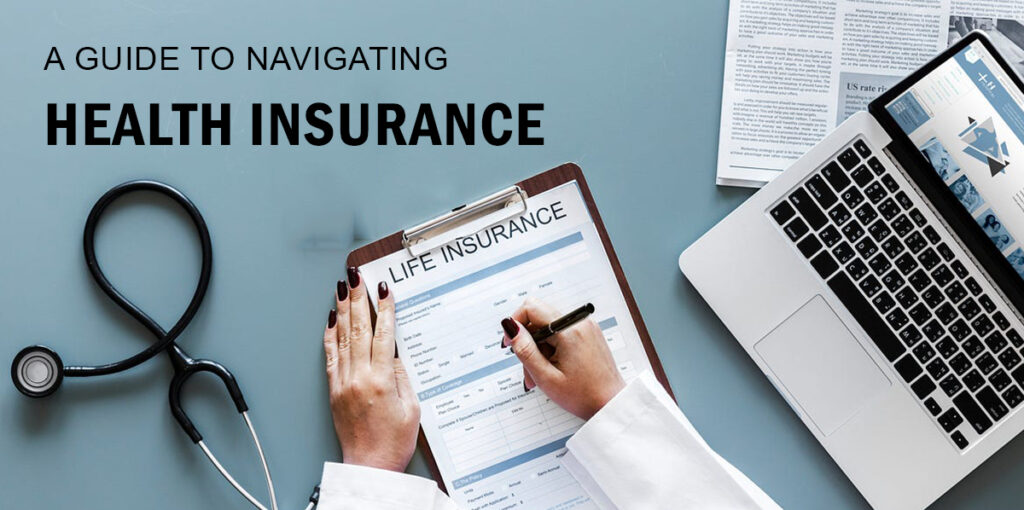
Navigating the world of health insurance can often feel overwhelming. With numerous plans, terms, and options, understanding the basics is crucial. This guide aims to demystify health insurance, helping you make informed decisions that suit your healthcare needs and budget.
Health insurance provides vital financial protection against medical expenses. In the following sections, we will break down the fundamental components of health insurance, including types of coverage, essential terms, and tips for selecting the right plan.
Understanding the Types of Health Insurance Plans
Health insurance plans generally fall into several categories. The most common types include Health Maintenance Organizations (HMOs), Preferred Provider Organizations (PPOs), Exclusive Provider Organizations (EPOs), and Point of Service (POS) plans. Each of these plans has its own structure, networks, and rules regarding patient care and insurance coverage.
HMOs typically require members to select a primary care physician and obtain referrals for specialist care. While often more affordable, they offer less flexibility since covered services are generally limited to those provided within their network. In contrast, PPOs allow members to see any healthcare provider without requiring a referral, although utilizing network providers results in lower costs. Understanding these distinctions is pivotal for making an informed choice that aligns with your healthcare needs and preferences.
Key Health Insurance Terms Explained
When exploring health insurance options, understanding key terms can help navigate the complexities of coverage. Some of the essential terminology includes premiums, deductibles, co-payments, co-insurance, and out-of-pocket maximums.
The premium is the amount you pay for your insurance plan, typically on a monthly basis. A deductible is the amount you must pay out-of-pocket before your insurance plan begins to cover costs. Co-payments are fixed amounts paid for specific services, such as doctor visits or prescription medications, while co-insurance is the percentage you pay for a service after reaching your deductible. Familiarizing yourself with these terms will empower you to compare different plans more effectively.
Out-of-pocket maximums are also significant; this is the most you will have to pay for covered services in a plan year. Once you reach this limit, your insurance pays 100% of covered services. Understanding these elements can make it easier to estimate potential healthcare costs and identify a plan that fits your budget.
Choosing the Right Health Insurance Plan for You
Selecting a health insurance plan requires careful consideration of your healthcare needs, budget, and preferences. Start by assessing your health needs, including ongoing treatments, medication, or anticipated healthcare services. Creating a checklist can help clarify what providers and services are essential for you and your family.
Next, consider your financial situation. Evaluate your budget for monthly premiums and other potential healthcare costs like deductibles and co-pays. While lower premiums may seem attractive, high out-of-pocket expenses can lead to higher overall costs if significant medical services are needed.
Lastly, review the network of providers available under each plan. Ensure that your preferred doctors and hospitals are covered, and examine the plan’s rating and customer satisfaction reviews to gauge the quality of service and claims support.
Navigating Open Enrollment Periods
Open enrollment is a critical time when individuals can sign up for health insurance or make changes to their existing plans. It usually occurs once a year, and it’s essential to be aware of the deadlines, as missing this window can lead to being uninsured or stuck with a plan that doesn’t meet your needs.
During open enrollment, take the time to review and evaluate your current plan. Are your healthcare needs changing? Are your premiums still manageable? These are essential questions to address. If you feel your current coverage isn’t sufficient, consider your options carefully and act promptly to secure the best available plan.
Moreover, many states offer Medicaid and Children’s Health Insurance Program (CHIP) enrollment outside of the open enrollment period for those who qualify, thus contributing to expanding coverage accessibility. Understanding your eligibility can provide options if you miss the general enrollment period.
Additional Resources for Managing Health Insurance
Managing health insurance effectively involves understanding not only what is covered but also knowing where to turn for assistance when needed. Numerous organizations and online resources can offer guidance, from government websites like HealthCare.gov to nonprofit organizations dedicated to consumer education.
It’s also advisable to leverage employer resources if applicable. Many employers provide information sessions or hire benefits counselors to help employees navigate their options, especially during open enrollment periods. These resources can often clarify plan details and ensure you’re making the most of your benefits.
Finally, don’t hesitate to reach out to customer service departments of your insurance provider for clarification on any aspect of your plan. Understanding coverage details, claims processes, and customer support can streamline your healthcare experience and enhance your confidence in managing your health insurance.
The Importance of Regularly Reviewing Your Health Insurance
Health insurance needs can change, and it’s crucial to regularly review your coverage to ensure it continues to meet your needs. Significant life events like marriage, parenthood, or job changes can necessitate reassessment of your current plan. Each of these changes can affect your healthcare needs, so being proactive in your approach can save you from facing insurance gaps or excessive costs.
Moreover, annual reviews can also reveal new plan options that may offer better coverage or lower costs. Health insurance companies often refresh their plan offerings each year, and your assessment may uncover improved benefits or features that align better with your current situation.
Lastly, being aware of changes in healthcare laws and policies can impact your coverage decisions significantly. Stay informed by reading industry news or following updates from reputable healthcare advocacy organizations. Knowledge will empower you to make the best decisions for your health insurance journey.






